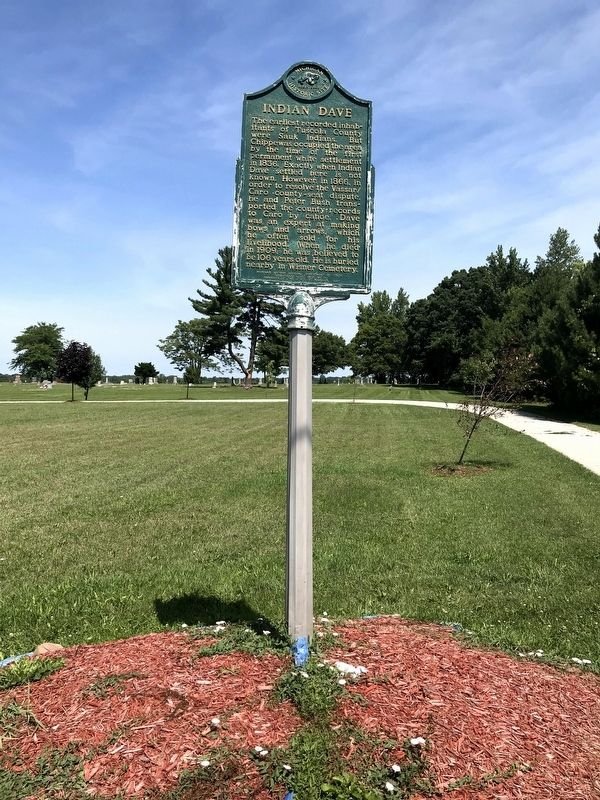Old Sebewaing Township Hall
Originally the building was used for many things: court/jury trials, Methodist, Episcopal, Moravian church services, a jail with 2 cells, Charlie Tredup's police office, and a voting place. One side housed a fire engine, meetings, Arbeiter Society, English Baptist congregation, and Tuesday night practice for the Sebewaing Band. In later years Immanuel Church held a rummage sale there. Boy and Girl Scout troops held meetings on the main floor and Jaycee and Jaycettes held meetings on the second floor.
Port hope Depot
In 1904 a depot was built in Port Hope and a station manager employed. The company decided a few years later that Port Hope was going to be the end of the line up the shore so an engine house, turn around and water tower were built to service the engines.
Port Austin History Center
The Port Austin Area Historical Society operates the Port Austin History Center. The museum, housed in a 1904 Maccabee Society building, presents the history of Port Austin, Grindstone City, and Port Crescent. The grounds feature other historic buildings.
Pointe Aux Barques Lighthouse Museum
The Pointe aux Barques keeper's house and tower have been completely restored and contain historical artifacts from a bygone era. The Museum is open to the public free of charge and donations are kindly appreciated to help fund the Society's projects.
Pioneer Log Village
This historic village is the largest collection of authentically restored pioneer log buildings in Michigan. The six individual museums include a pioneer home, general store, one room school, chapel, barn and a blacksmith shop. They were originally built between 1875 and 1900 and moved to this site from elsewhere around Huron County, Michigan, in the 1980’s. Each contain period artifacts and antiques that let the visitor step back in time and look into this area’s past.
Pigeon Depot Museum
The Depot Museum, as it is often referred to, occupies the former Pigeon Depot which was built in 1908 as a joint venture of the Pontiac, Oxford and Northern and the Pere Marquette Railroads. Today it contains over 2000 artifacts from past Pigeon businesses and the people who lived here. See the clothes they wore, the tools they worked with and how their homes may have looked.
Maccabee Hall Musuem
Housed within the historic Maccabees hall, Caseville Museum strives to offer visitors an opportunity to trace the city's history through its immersive displays. Established in 2008, the museum is managed by the Historical Society of Caseville, which aims to promote an understanding of the area's culture and traditions.
Luckhard Museum
The Luckhard Museum is a mission that was built for teaching the gospel to the American Indians in 1845. It houses pioneer & Indian relics.
Elkton Log Cabin Museum
Working to collect and preserve the past history of the village of Elkton and the surrounding area. Also to pass on the history of said area and educate the future generations.
Huron City Museums
Huron City had its start as a lumber town in 1854 founded by Langdon Hubbard. His descendants are keeping the history alive caring for the buildings and the things he left behind through the William Lyon Phelps Foundation.
Juniata House
In 1851, Patrick McGlone (1810-1884) settled near here. Later, he built a one-story Greek Revival Style building that he named “Juniata House” where he provided lodging and food for travelers, as well as “good Barns” stocked “with hay and grain.” His family served travelers for fourteen years.
Indian Dave
Indian Dave was one of the last Chippewas to hunt, fish, and trap in the old manner in the Tuscola County area. Dave was born around 1803 and given the name Ishdonquit. When he died in 1909, he was believed to be 106 years old. He is buried nearby in Wisner Cemetery.
Gilford United Methodist Church
In 1889 Charles and Naomi Phipps donated land for a church building. Church members laid the cornerstone later that year. In 1968, through a merger with the Methodist denomination, the name became the Gilford United Methodist Church.
Frankenhilf
In 1849 Pastor Ferdinand Sievers of Bay County purchased over fifteen hundred acres of virgin forest here in Tuscola County to establish a colony of immigrants from revolution-torn Germany. They named their community Frankenhilf, combining Franconia, a district of Bavaria, and hilf, meaning assistance.
First Presbyterian Church of Caro
For the first year, this small group of Presbyterians held their worship and prayer services in the homes of members. Then in 1880, they erected their first house of worship on Lincoln and Pearl Streets. It has had no structural alterations since construction. A regal structure, it features a corner tower and stained glass windows.
Elkland Township Hall
This hall was built in 1881 as the center of government activity for Elkland Township. Erected at a cost of twenty-six hundred dollars, it was the first brick structure in Cass City.
First Presbyterian Church
Three people gathered in June 1877 to form the First Presbyterian Society of Cass City. The congregation soon called its first pastor, the Reverend John Kelland, who led fundraising efforts to build a permanent home for the society. By the fall of 1878, a wood building was erected on this site.
White Rock School
Named after a boulder in Lake Huron that was used as a landmark in the Indian Treaty of 1807, the village was settled about 1860. Destroyed in the Great Fire of 1871, the town was soon rebuilt, including a schoolhouse. The present building was constructed in 1909.
The Indian Mission
On July 1, 1845, three Lutheran missionaries, Reverend Johann J. F. Auch, Reverend J. Simon Dumser, and Reverend George Sinke, arrived to evangelize the Chippewa Indians. A log chapel was built here later that summer.



















